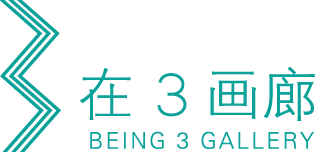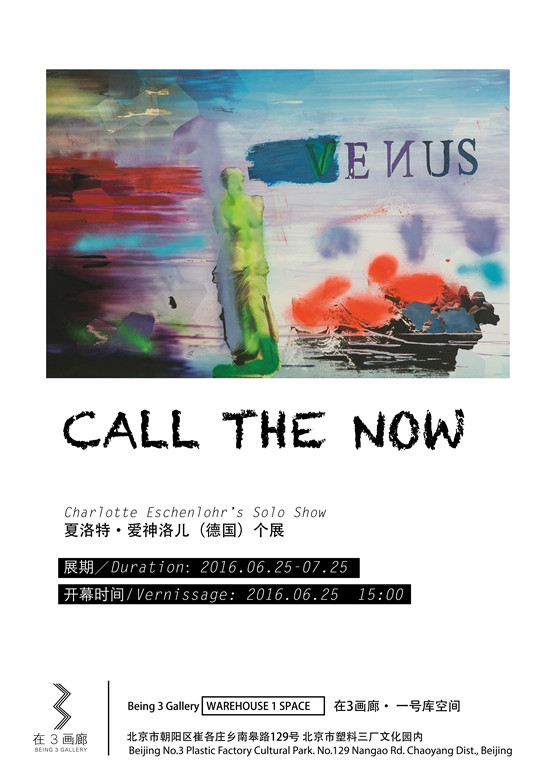

策展人:
徐化宁
艺术家:
夏洛特·爱神洛儿
Curator(s):
Xu Huaning
Artist(s):
Charlotte Eschenlohr
CALL THE NOW——夏洛特•爱神洛儿(德国)个展 CALL THE NOW——Charlotte Eschenlohr solo exhibition
前言
作者:文嘉琳 翻译:徐化宁
生活和工作在北京的德国艺术家夏洛特. 爱神洛儿(Charlotte Eschenlohr),主要以拼贴的艺术手法来表达她个人对当下世界的观察。这显然是一种再好不过的方式呢!拼贴,这种去中心化,解构和结构并存的表达方式,正好适宜于不带民族狭隘性的世界性的认知。
本次展览主要展出夏洛特五个系列的作品《Dragon fly》、《All is real》、《Strange pureness》、《Easiness》,以及《Call the now》。在《Dragon fly》和《All is real》里,艺术家仿佛随手捡来各种摄影图片,添加上文字片语和手绘涂鸦,充满随意性和游戏感,如董永、七仙女鹊桥相会的故事剪影与男女情色描绘、灯红酒绿现实图景碰撞;佛头造像与饮食男女搭凑;秦俑、虎头图谱与摩登女郎拼装;各种仿古店面装修街景与挂着牡丹国画的酒店前台并置;摩天楼、汉字书法、洋品牌的交织……然而,这些漫不经心的图像与符号的累加,却释放出强有力的象征意义:一个杂糅着封建观念、古老文化、消费主义以及伪传统和后现代样式的“混合中国”。作为一个外来的德国艺术家,夏洛特受到中国当下社会各种事物的轰击,她把所看到的图像和符号一股脑放在作品之中,给予我们观者却是一种文化残骸废料与现代生活支离碎片的关于这个“龙图腾”国家的“真实”场景的启发。
在《Strange pureness》与《Easiness》系列作品中,艺术家的主观描绘逐渐增多。夏洛特使用广告画手法,以绚烂、无序、廉价的态度去描绘全球化时代的商业文化、生活趣味以及传统文化的重重魅影,对大众生活所崇尚的商品神话、时尚品味、理性秩序进行颠覆破坏。夏洛特作品中的达达主义精神,是在于对我们日益包装精美的日常生活的解构与反思。
艺术家最新系列作品《Call the now》,更加偏向女性图像的挪用,有古典艺术中经典的维纳斯女神,也有大众媒体中常见的摩登女性。象征爱与美的女神维纳斯一直都是世代众人仰慕和讴歌的对象,从古希腊亚历山德罗斯的“断臂维纳斯”到文艺复兴时期的桑德罗·波提切利的《维纳斯》无不是对女神的崇拜结果。在今天,对女神的崇拜表现在对经典的解构和大众媒体对普通女人的塑造之上,带着“Gemäldegalerie StaatlicheMuseen zu Berlin”(柏林画廊柏林国家博物馆)标识的波提切利的维纳斯女神已经被打碎,被商品包围的“新女神”正逐渐登场……夏洛特用似幻似真的手法整合当今大众媒体中的女人形象,她们个个仿佛都是苗条身材、踩踏高跟鞋、前卫解放的爱与美的化身,连男人都忍不住掩面惊呼,但实际上这一切不过是商业社会打造的消费形象,这些形象不仅无益于女性地位的改变,反而使女性沦为被商品捕获的猎物。大众传媒的时代,商业文化炮制的神话泡影被夏洛特的《Call the now》戳破。夏洛特原本就是学商业管理出生,自然深谙资本主义文明下商品文化的实质。
对于一个艺术家来说,拼贴早已不是什么稀奇的手法,但其手法的单纯与其观念思想的敏锐才是作品之所以胜出的缘由。夏洛特大胆冒险的借用杂乱日常和低级大众媒体图像,不加精修与成见的编排在一起,意义却像神谕一样突然而归,还这个迷幻当下以真实和纯度。
Preface
by Wen Jialin translate:Xu Huaning
Charlotte Eschenlohr, a German artist who lives and works in Beijing, distills her observationson contemporary society primarily through the artistic form of collage. What better way could there be Collage, a medium of expression wherede-centralization, deconstruction, and reconstruction co-exist, is a fitting way to articulate a global perspective without a parochial nationalistic mentality.
This exhibition presents five series by Charlotte: Dragon Fly, All Is Real, Strange Pureness, Easiness, and Call the Now. In Dragon Fly and All Is Real,photographs that are seemingly collected at random by the artist are combined with fragments of words and hand drawings, and together they reflect an air of playfulness and chance. The seven fairies from the legendary tale of the meeting at the Magpie Bridge with Dong Yong clash with erotic portrayals,neon glamour, and a hyperreal cheap prettiness; statues of Buddha are paired up with food and sex; Terracotta Warriors and illustrations of tiger heads meet the modern dame; street scenes showing the facades of various stores stand side by side with a hotel reception counter showing a traditional Chinese painting of peonies hung in the background; and skyscrapers, calligraphy,and Western brands are all intertwined. The combination of this free imagery and symbolism, however, releases meanings that are powerful and allegorical: a “composite China” that embodies archaic feudal ideas,ancient culture, and consumerism as a nation of pseudo-traditions and post-modernity. As an expatriate artist from Germany, Charlotteis struck by the diversity of phenomena in contemporary Chinese society, and she brings together these images and symbols, juxtaposing them in her works. What is presented to us are enlightening pictures of the “reality” of this country of the “dragon tattoo,” where cultural debris and waste confront the fragmentation of modern life.
In both the Strange Pureness and Easiness series we observe a heightened depiction of the subjectivity of the artist. Deploying the methods of commercial posters, Charlotte takes their luscious, disorderly, and cheap attitudes as a point of departure to depict the multitude of phantoms found incommercial culture, the desires of everyday life, and traditional heritage in the era of globalization, which in turn disrupts and destroys the fairy tales of commodity, tastes of fashion, and the order of rationality fervently pursued in our public life today. The spirit of Dada art resides in Charlotte’s work through the dissection and introspection of daily life that is being packaged in increasingly charming wrapping paper.
The latest series Call the Now makes use of appropriated feminine imagery, ranging from classical portraits of the Roman goddess Venus to the modern women frequently envisioned in mass media. As an embodiment of love and beauty, Venus has been the object of admiration and celebration for generations. From the Venusde Milo by the ancient Greek artist Alexandros to The Birth of Venus by SandroBotticelli during the Renaissance, the representations of Venus are the fruit of an idolization of the goddess. Currently, the worship of the goddess manifests itself through the deconstruction of the classics and the construction of a new image of the ordinary woman that prevails in mass media. The Venus that bears the label of “Gemäldegalerie Staatliche Museen zu Berlin” (Gemäldegalerie StateMuseum of Berlin) has vaporized, and a “new goddess” wearing designer labels is taking the stage. Charlotte assembles an image of women created by mass media through means that are magical as much as they are naturalistic. With slender figures and high heels, all of them are an embodiment of the liberated concept of love, beauty, and the avant-garde – even men can’t help but cover their eyes and exclaim – but the truth is they are nothing but an image for consumerism produced by the commercial society we live in. This image is not only useless in improving the social status of women, but actually degrades women as the prey of commodity. In this time of mass media, the myth concocted by consumerist culture is torn up in Callthe Now. Charlotte originally studied business management ,so she is very familiar with the nature of commodity culture under capitalism civilization .
Today,collage is no longer a medium of novelty for the artist: what makes a piece of collage artwork stand out is the simplicity of the method and the acuteness of the conception. In an audacious manner, Charlotte borrows from the chaotic form of daily life and the cheesy images of mass media, and edits them together without any beautifying or judgmental alteration. Immediately, meanings emerge like oracles, and hallucinatory reality is returned to veracity and purity.